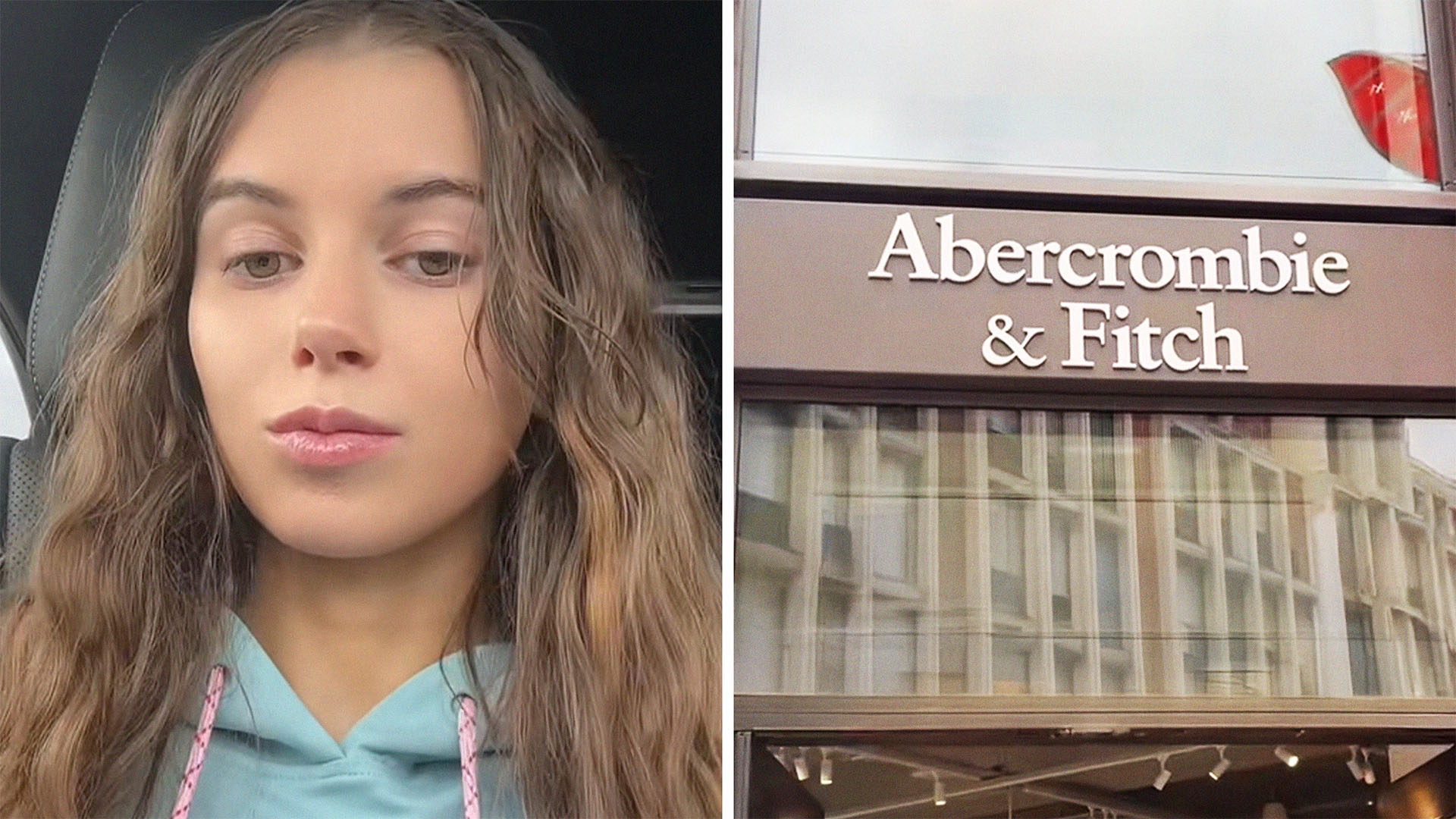
Losing your absolute mind in a fitting room isn’t uncommon. Especially for U.S. women, who’ve long known that sizing just doesn’t add up. You could try on five pairs of size 8 jeans from five different stores, and they’d all fit completely differently—if they fit at all.
To show just how out of control things have gotten, one woman on TikTok compared two Abercrombie size 00 jeans—an old pair she had lying around, and one she recently bought. The difference was wild.
Abercrombie jeans got…bigger?
TikTok user Rachel (@rachelversee) posted a video comparing two size 00 jeans from Abercrombie: one pair from years ago, and another she bought more recently. The video got more than 4.5 million views.
“Comparing my older Abercrombie jeans to what they claim is a 00 now,” the on-screen text reads.
In the clip, Rachel lays the old pair on top of the newer one—and they’re clearly not the same. The newer pair looks nearly twice as wide.
“Actually insane how much bigger they are,” she wrote in the caption.
‘Why can’t women’s jeans be like men’s?‘
In a follow-up video, Rachel stitches a comment suggesting brands use actual waist and length measurements instead of number sizes.
Filming the mismatched back pockets of the two jeans, she added: “Seriously!! Why can’t women’s jeans be like men’s sizing where you pick your waist and length (and them to actually be accurate).”
She also responded to a comment about vanity sizing, writing, “Brands need to start lining up tape measures like resellers because this is the only way I can reliably buy pants online.” The screen shows a jeans listing with tape measures stretched across the waist and crotch, and flare at the bottom.
What is vanity sizing? Have U.S. clothing sizes gotten bigger over time?
Vanity sizing is when brands assign smaller size labels to clothing that actually runs larger than traditional size standards.
The logic is simple: if a customer fits into a smaller size—like a 2 instead of a 6—they may feel more confident and be more likely to make a purchase.
There’s no universal sizing chart in the U.S., which gives brands flexibility to create their own. Over time, this has led to significant inconsistencies between retailers.
Vanity sizing is especially common in women’s fashion and has made online shopping and fit prediction much harder.
For example, a size 8 in the 1950s is not the same as a size 8 now. Brands have shifted measurements to match changing body trends and boost sales, leading to huge inconsistencies.
And it’s not just women’s clothing that’s inconsistent. In 2010, Esquire compared a men’s size 36 waist from several retailers and found actual waist sizes varied by up to 5 inches. Women’s sizing is even more chaotic, with no universal standard in place.
@rachelversee Actually insane how much bigger they are #abercrombie #clothes #jeans #fyp ♬ take me away – Capitã Nik
Commenters share the same frustration
“This is why we all had eating disorders in the 2000s,” one person said.
Another added, “Why can’t women’s jeans use inch/cm waist and length sizing like men’s?? It would be so much easier across brands, and no vanity sizing either.”
“And this is how body dysmorphia starts,” a third commenter wrote.
Some pointed to the rise and fit of the jeans as a possible explanation, as the smaller pair is labeled as low-rise and a jegging fit.
But Rachel made it clear: the older pair is low-rise jeggings from years ago, and the bigger pair is what she bought now. The fact that both are labeled size 00 only proves her point—sizing is all over the place.
The Mary Sue has reached out to Rachel via TikTok direct messages and Abercrombie via email for official comment.
Have a tip we should know? [email protected]







